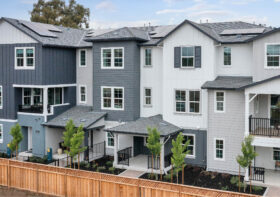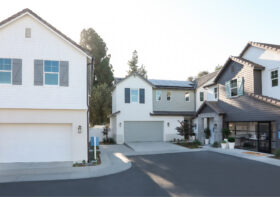Student Housing Today

With the rising cost of student housing for on- or off-campus projects, schools and developers are looking for innovative solutions to relieve the financial pressure on students and their families. Multiple considerations on privacy, security, transportation, and a sense of community must be balanced with costs.
Older universities like UCLA are building new and total rehabilitation of old facilities to like-new quality to provide a quality healthful living environment. Using no-VOC materials, eliminating carpets and other bacterial environments, reducing energy and water consumption, and creating a variety of study/gathering spaces are among the key goals. UCLA has also focused on its food program, offering high-quality food at reasonable prices – they even have a cookbook!
At UCSD, their new Torrey Pines Student Village combines housing in an integrated community of marketplace, crafts center, auditorium, and upgraded dining (New York quality at street prices) that is designed to attract the entire university and the neighboring community.
Private developers are looking for sites within a half mile of a school, near enough to walk or bike, which is increasingly a major consideration. Instead of an afterthought, bicycle storage should be well planned, integrated, and apportioned with auto parking diminishing. UCLA no longer provides parking for student housing and increasingly, cities are unbundling parking from housing, with the increase of shuttles, UBER, and other car-sharing options.
Four bed / four bath units with up to eight occupants have become a standard format, though flexibility is key. When needs change, walls can be added or removed to subdivide the accommodations to suit the evolving program. Smaller schools are building sophomore housing to stem the attrition that comes when students are forced to find alternative, more costly housing in their second year. Graduate housing comes with a different focus on family occupancy and more sensitive understanding of cost and privacy.
Gen Z is considered to be the most tech-savvy generation, but it is also the most stressed-out, with 60% considered extremely anxious and 34% obese, making health and fitness more important to incorporate with encouraging strategies like stairs next to elevators.
Student housing construction timing is critical because housing availability must coincide with the school term. At USC’s massive new University Village, the use of prefabricated brick panels saved numerous months of construction time over conventional techniques. Panelized and modular construction are being studied to reduce time and construction costs, construction waste, on-site port-a-potties, and truck delivery traffic.
WHA’s Samueli Academy student housing project in Santa Ana is an innovative concept for foster care high school teens to take advantage of new educational opportunities where they can focus on their studies during the week and return to their foster families on the weekends. Six units of five bedrooms each feature a shared dining/study room where children will be responsible for their own meals with some supervision.
Student housing today is much different than even ten years ago. Providing the quality environment needed and desired while controlling costs are key points to give all students the foundation for their future success.




Leave a Reply